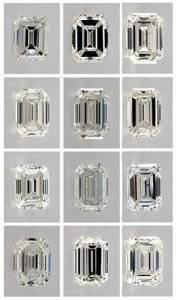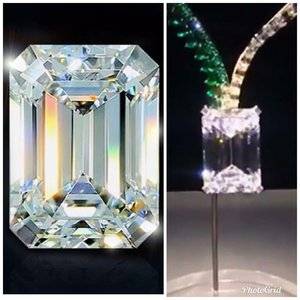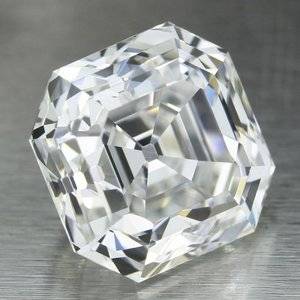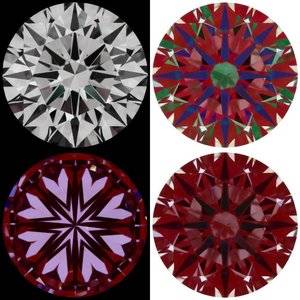- Joined
- Aug 4, 2008
- Messages
- 15,786
Todd,
With near tolk h&a ideal cuts there is a very limited range of contrast patterns. In fact the narrow range of the width of the arrows and a narrow table size range are the most visible differences. They are very tiny differences compared to the possible differences in patterns in step cuts.
ECs and other step cuts contrast patterns are a very important part of preference.
You can show someone equally bright diamonds with different contrast patterns and they may really dislike one and strongly prefer another.
Brian went with a wide and low number of contrast stripes.(VFs that show obstruction).
While a valid way of doing it and one that some will like, not everyone will like the bolder and fewer contrast patterns.
That is also very valid.
They may prefer more and narrower and less bold contrast stripes.
There is no one EC pattern that will be universally liked among people that have seen a lot of them.
That takes nothing away from my awe that he appears to have tackled the rough supply problem to bring a line of them to market.
With near tolk h&a ideal cuts there is a very limited range of contrast patterns. In fact the narrow range of the width of the arrows and a narrow table size range are the most visible differences. They are very tiny differences compared to the possible differences in patterns in step cuts.
ECs and other step cuts contrast patterns are a very important part of preference.
You can show someone equally bright diamonds with different contrast patterns and they may really dislike one and strongly prefer another.
Brian went with a wide and low number of contrast stripes.(VFs that show obstruction).
While a valid way of doing it and one that some will like, not everyone will like the bolder and fewer contrast patterns.
That is also very valid.
They may prefer more and narrower and less bold contrast stripes.
There is no one EC pattern that will be universally liked among people that have seen a lot of them.
That takes nothing away from my awe that he appears to have tackled the rough supply problem to bring a line of them to market.







300x240.png)